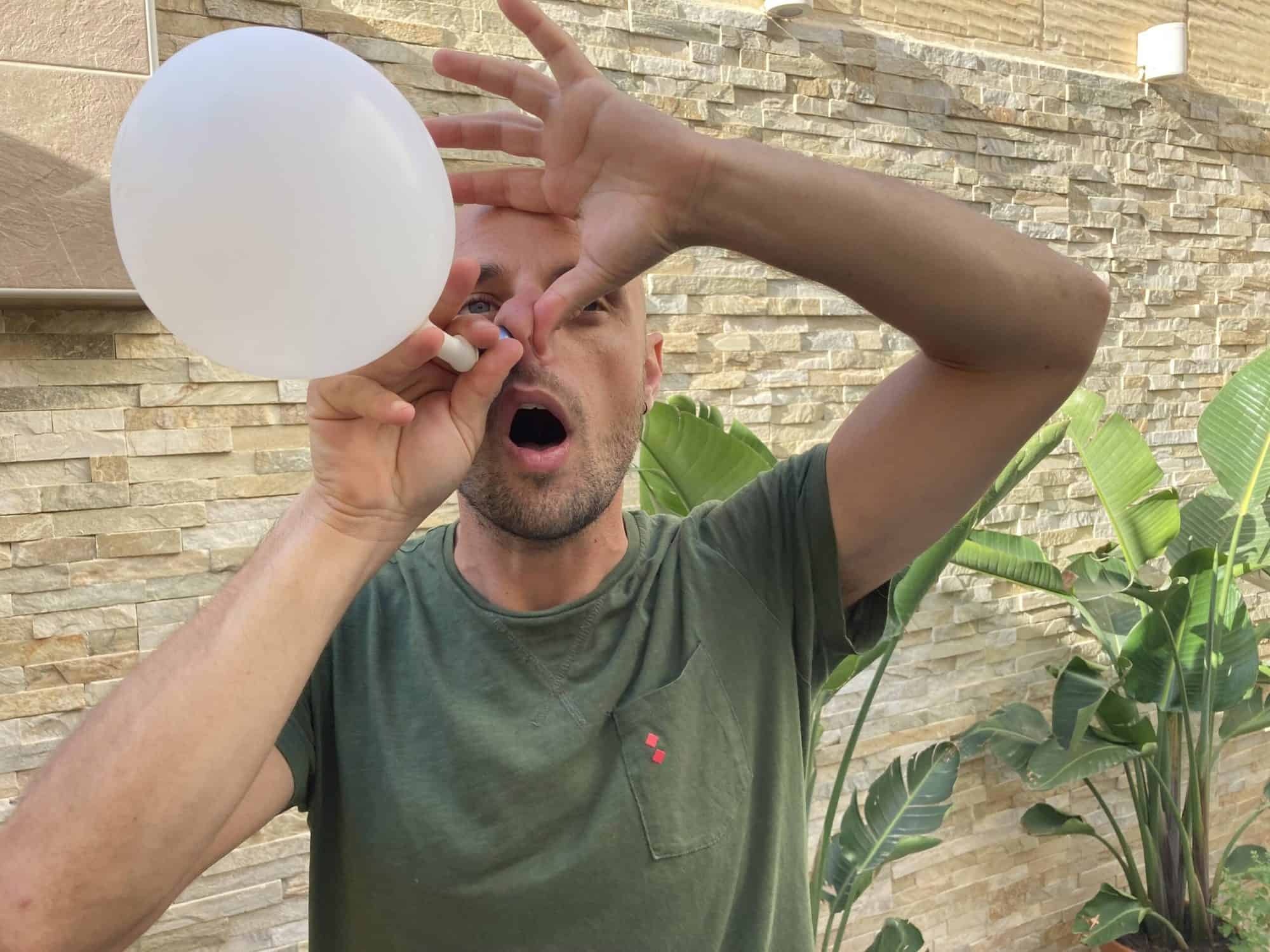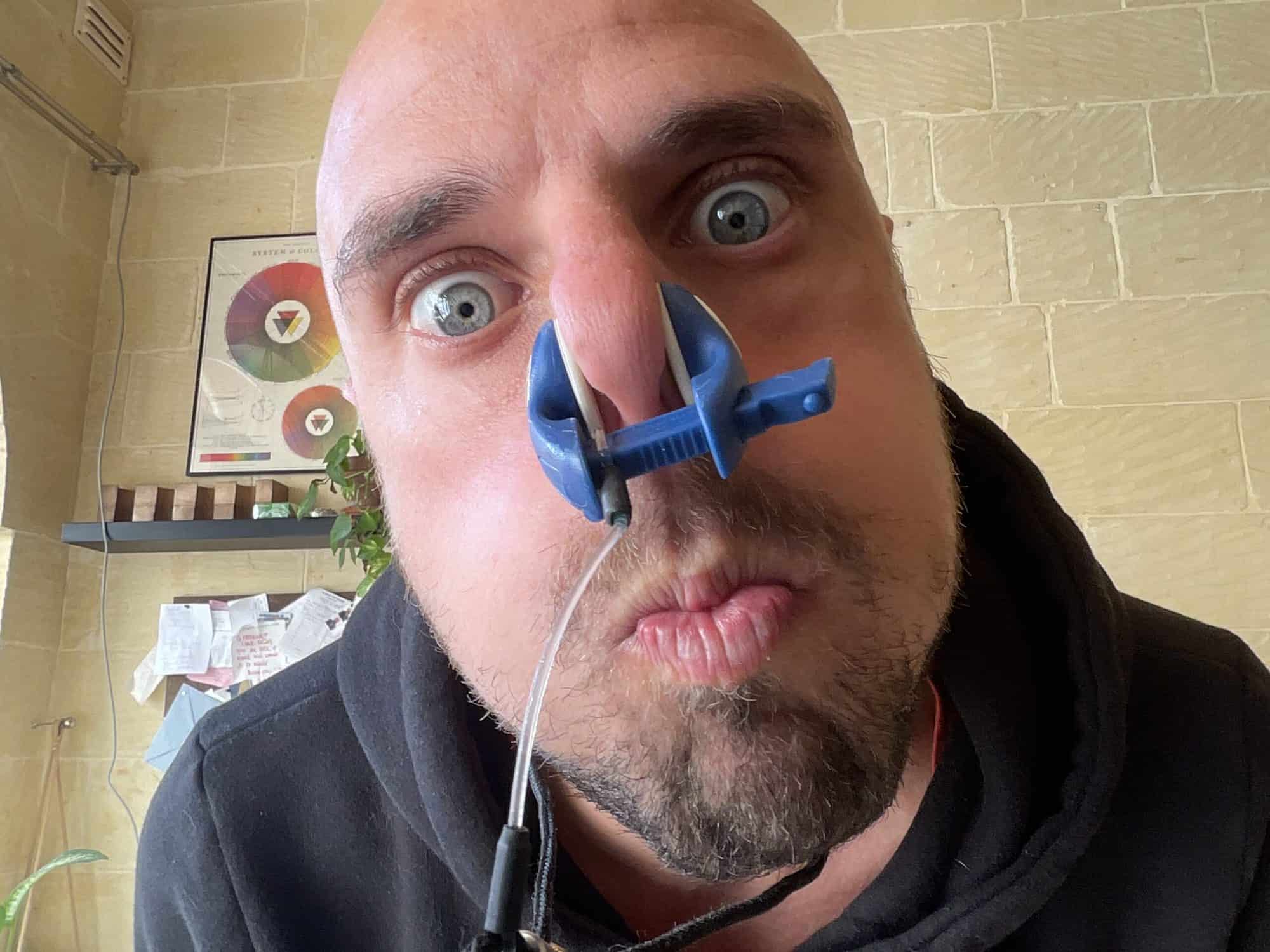Over the years, freediving equalisation tools have been developed and integrated into teaching methods used by instructors and coaches alike. Way back in the 2000’s, the Italians, specifically Federico Mana and Andrea Zucchari began to use the Ottovent (which we’ll be talking about later) and devolop protocols. In recent years, more tools have been developed; some high-tech and others for more specific training.
The Ottovent / EQ tool
The Ottovent, originally invented for medical use for children suffering from a condition called glue ear and to aid in equalisation on a plane. As mentioned previously, the Italians later jumped onto the bandwagon and started creating their own protocols to aid free divers with equalisation.
Starting from ground level, the Ottovent is a great tool for beginners (without the use of a balloon), specifically those who valsalva equalise. By biting the device, the user automatically immobilises the jaw and can start pushing and feeling air in and out of the Ottovent by use of the tongue.
Balloons are attached to the device, which automatically creates a back pressure. This back pressure is ideal for strengthening and coordinating the tongue, jaw and cheek muscles as it creates stress. The glottis and soft pallet are another group of muscles that are trained separately.
EQ tool by UBA project
The Eq tool by UBA is the first equalisation digital device that help freedivers increase awareness and improve their equalization. The device connects to the smart phone / tablet application via bluetooth. Once connected, the user is able to set thresholds and times whilst at the same time adjust the airflow.
The device has four positions at which the ball can be set for airflow. This means we are able to ‘replicate’ the decrease in volume that we feel during a dive.
Once the settings have been determined, we simply connect the device to our nostril and begin equalising. We get live, instant feedback from the app which shows; mouth-fill management, amount of pressure being used or whether the soft pallet is being open or closed during reverse packing.
For beginners, it is especially helpful. They start to make connections between what they are doing and what is happening. It allows them to see the pressure they are creating and when an equalisation happens.
It goes without saying, this device is a great aid to both students learning how to equalise and to instrucors.
The bubbler / Water pipe
The water pipe mimics the decrease in volume in the oral and nasal cavity that occurs during a dive due the increase in pressure on descent.
All you need is a transparent plastic, solid pipe which does not leak water. The height should be around 70 cms tall and have a diameter of between 5-10cm. I use a doctors Y-pipe stethoscope and connect another nasal pipe (used in hospitals) to it which leads into the water inside the transparent, solid pipe. Connected to the upper piece of the Y-pipe is a blood pressure gauge and another nasal pipe. The next thing you’ll need to do is connect an Ottovent / EQ tool to the nasal pipe to begin blowing bubbles!
The deeper you leave the pipe in the water the more pressure you will need to push the air out of the oral and nasal cavity. You can set different pressure values according to the level of the student.
This device is similar to the EQ tool by UBA project. It gives more of an analogue feel rather than seeing what is happening digitally.
This tool also allows the user to see if any reverse packing is happening. Reverse packing involves creating a negative pressure inside the oral cavity. This negative pressure will suck in the water if the soft pallet is open.
Applying the tools when teaching
The tricky part is knowing when to use these tools, and in my opinion, this comes with experience. Let’s being with the EQ tool / Ottovent. Sometimes beginners often find difficulty in immobilising the jaw and tongue movements. By simply biting on the tool, the jaw cannot move and only leaves the tongue to push the air in and out of the tool. Immediately, this gives them the awareness that they can push air in and out by use of the tongue. Personally, I will never give a beginner who has poor co-ordination and awareness an Eq tool / Ottovent with a balloon attached. The back pressure is simply too much / stressful.
Balloon exercises are a great way of strengthening the muscles involved in equalisation, as well as increasing awareness and co-ordination.
The EQ tool by UBA project can be used for any level freediver and the feedback it gives the teacher is endless. The most common mistake most students do is apply too much pressure to their frenzel or mouthfill. The tool can quickly show the student exactly how much pressure is needed to equalise the middle ear.
The last piece of equipment is the water pipe or bubbler. This tool can be used in a number of ways and I usually will not give it to someone who uses the valsalva manoeuvre or has poor frenzel technique. It is a fantastic piece of equipment for those learning mouthfill management, specifically knowing when to change from cheeks to jaw, to T, K and G lock. Furthermore, you can set different pressure values, ie the amount of pressure needed to send out air from the pipe.
For those who have poor frenzel technique, I set a low pressure value and ask the student to push as much air possible out from the pipe. The idea is to start training the tongue with a small amount of stress. After I am satisfied, the pressure value is increased and the exercise is repeated.

